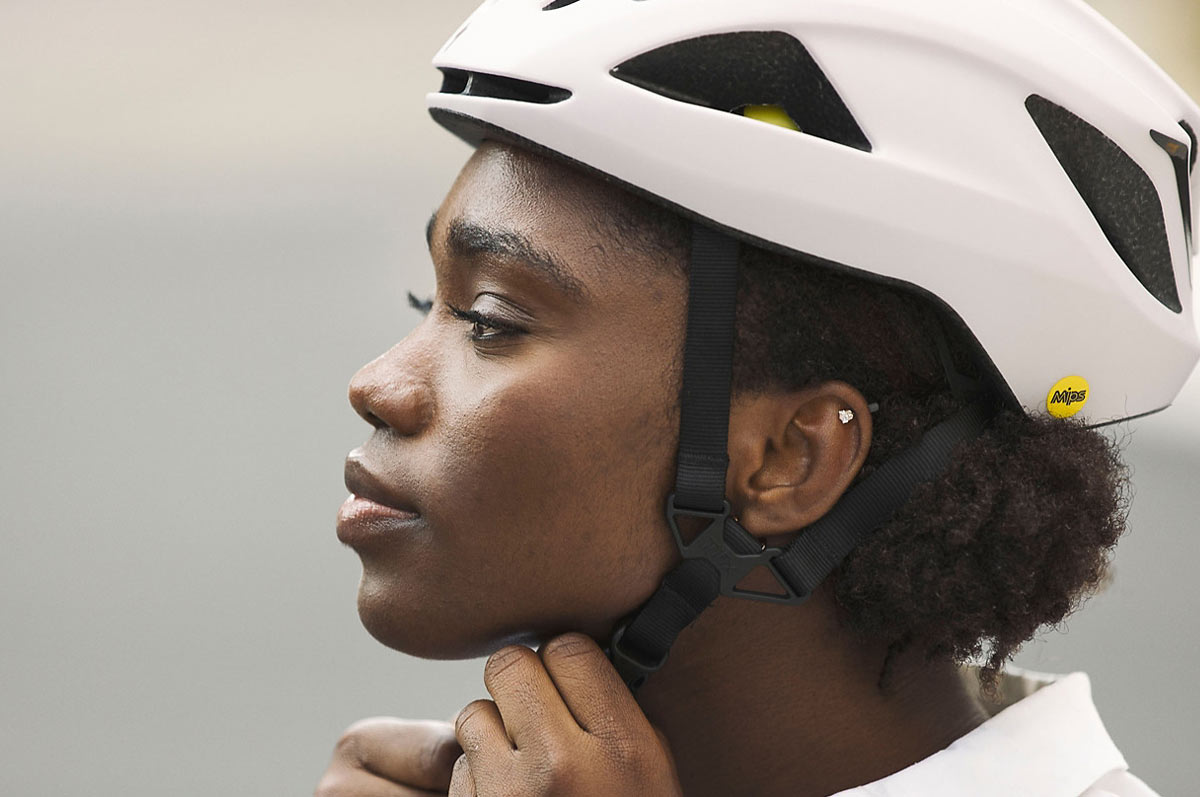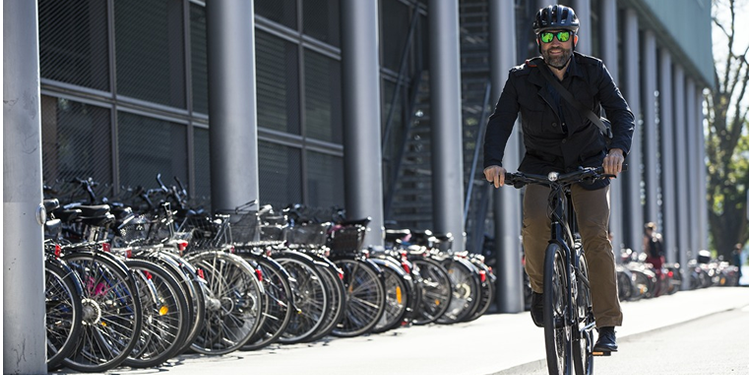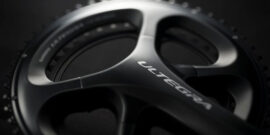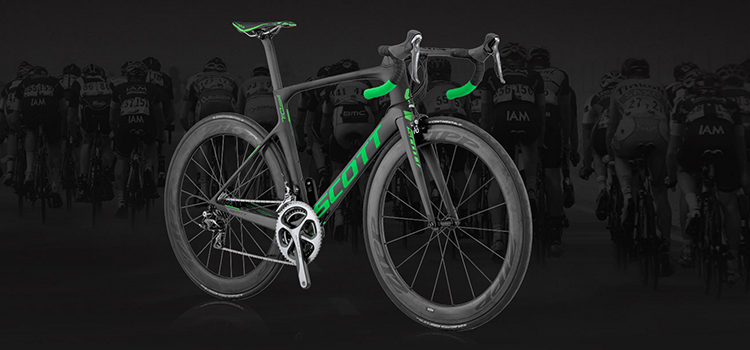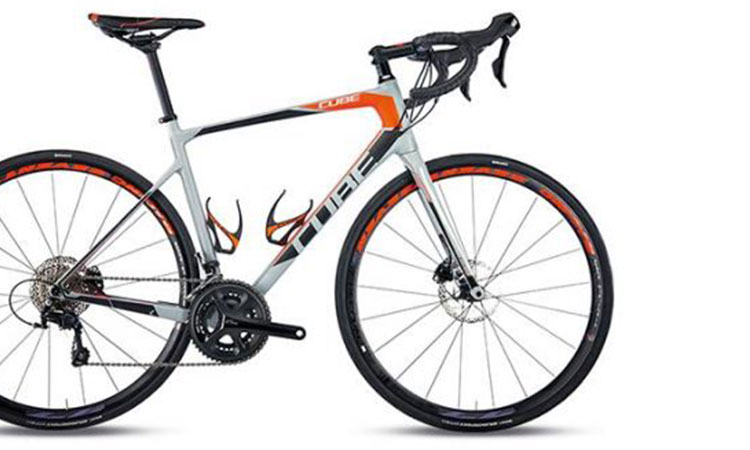How to fit a cycle helmet
No matter what type of cyclist you are, whatever age, safety should be your top priority. The humble bicycle helmet is the one bit of safety gear that transcends all cycling disciplines and skill levels. For such a relatively simple thing it’s undoubtedly one of the most important and can quite literally be a lifesaver. Even with the best will in the world sometimes accidents happen, and when they do it’s crucial that you have the right helmet that fits correctly. Here’s are guide on how to get the perfect fit when choosing a helmet.
Measuring up
Before you start to look around for a new helmet we recommend you measure your head (or the head of the person you’re buying for). Almost all helmet manufacturers size their helmets based on the circumference of the wearers head. This measurement is taken from just above the eyebrows and around the back of the head at its largest point.
When it comes to taking the measurement you’re going to want to use a fabric or flexible tape measure. If you don’t have a flexible tape don’t worry. You can use something like a piece of string to mark the length then measure against a ruler or non flexible tape measure.
You want to have your measuring device about 2 inches above your eyebrows and around the widest part of your head to take your measurement.
Try a few out
When selecting your new helmet we recommend trying a few out. The one that you initially think looks good might not feel the most comfortable. Comfort is incredibly important, you’re going to be wearing your helmet everytime you ride so you want it to feel right. Some helmets may be the same size as others on the packaging or label but feel completely different when they’re on, so it may take some trial and error before you find the perfect fit for you.
If you can pop in to your nearest 99 Bikes then trying out a few options isn’t a problem. For our online customers we now offer free returns with helmet purchases so you can get the helmet that fits you best.
If you aren’t sure which brand to choose or which cycling helmet is best for your riding style, then check out our other Helmet Buyer’s Guides.
Adjustment
Most helmets will have a couple of points of adjustment to aid with comfort and more importantly to keep you safe. Once you have found the right helmet adjust the straps and rear adjuster until the helmet feels secure but isn’t too tight.
Make sure the the helmet covers the majority of your forehead. If you put your index and middle finger together and sit them above your eyebrow that should be where the helmet should sit.
Next, twist the adjuster at the back of the helmet if there is one. The helmet should feel comfortable and neither too tight or too loose.
Do the same with the chin strap. The chin strap should be comfortable on both your face and chin and shouldn’t cut or dig in anywhere – the helmet is too small or the strap is too tight if this happens. The V of the straps should also sit around your ears – if these are on top of your ears, then you’ll need to adjust the straps again or get the next size up.
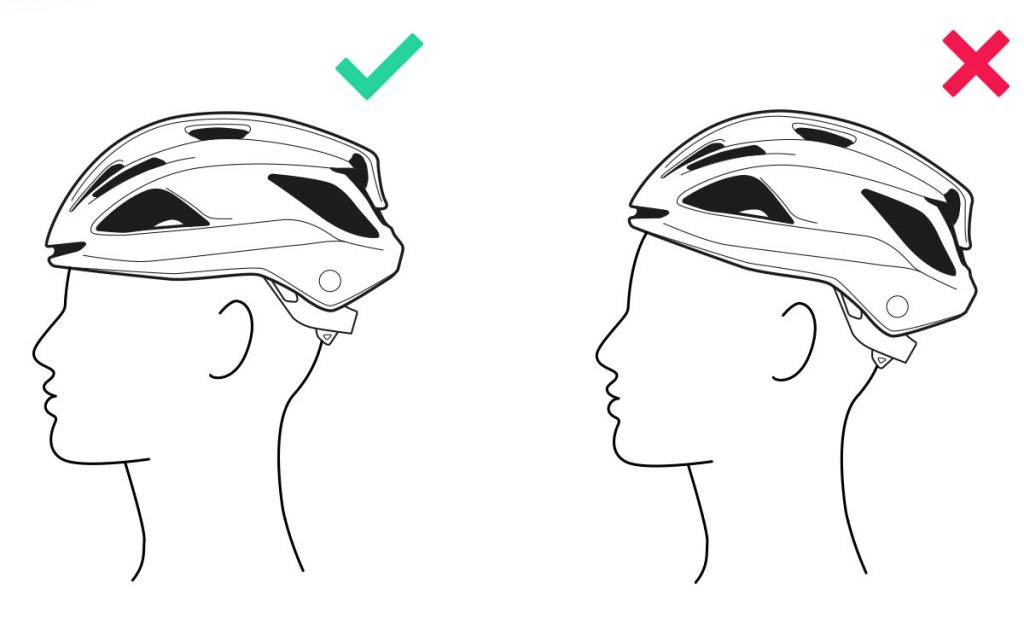
Test the Fit
Once the helmet feels comfortable it is time to test the fit. Push the helmet forwards and backwards as well as side to side. If the helmet can move in any direction more than about an inch, it needs to be adjusted again or it could be too large. The helmet should be able to move a bit, if it doesn’t move at all it’s probably too tight. If everything seems ok then you should be good to go. We do recommend checking the adjustment of your helmet regularly to make sure things haven’t loosened overtime.
If your helmet gets damaged or is involved in an accident you should always replace it as the safety of a helmet can be compromised by any damage it has sustained.

